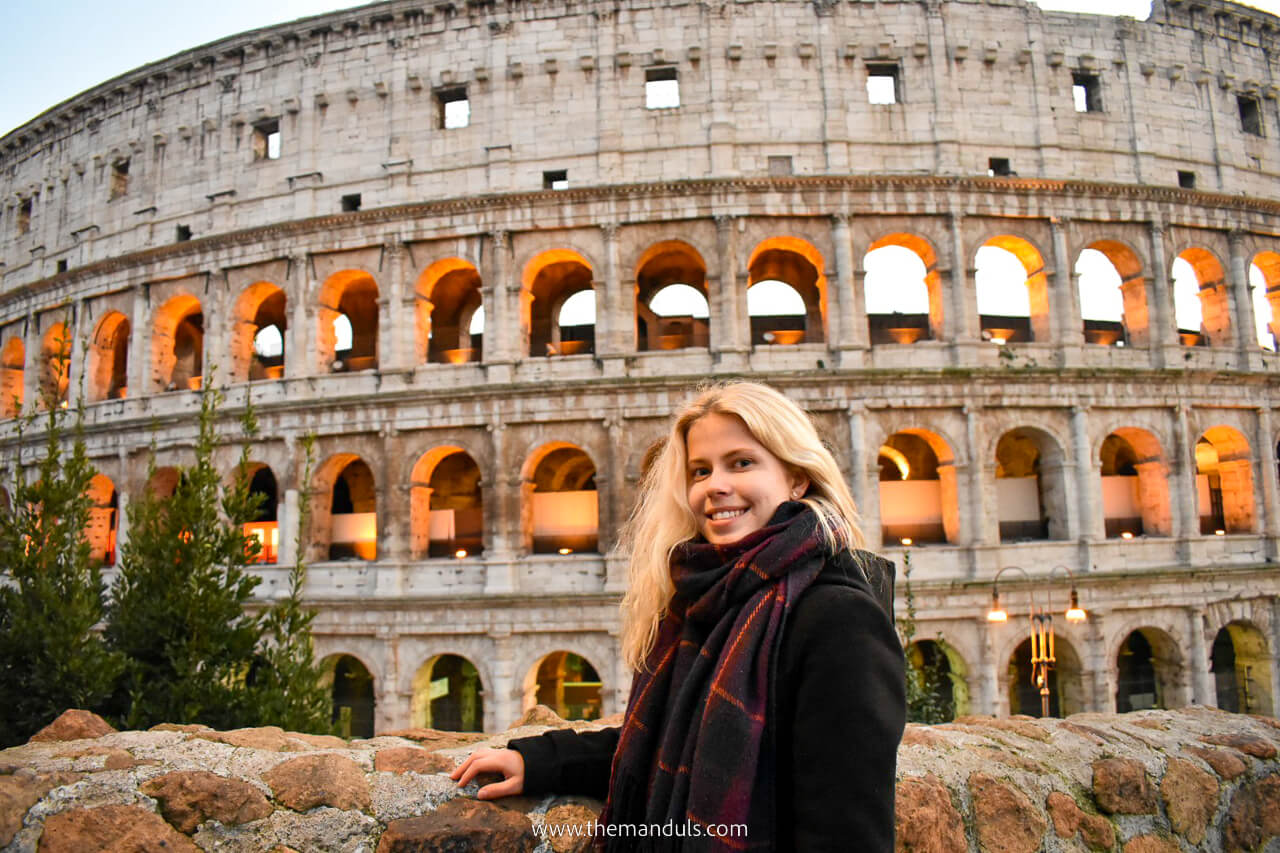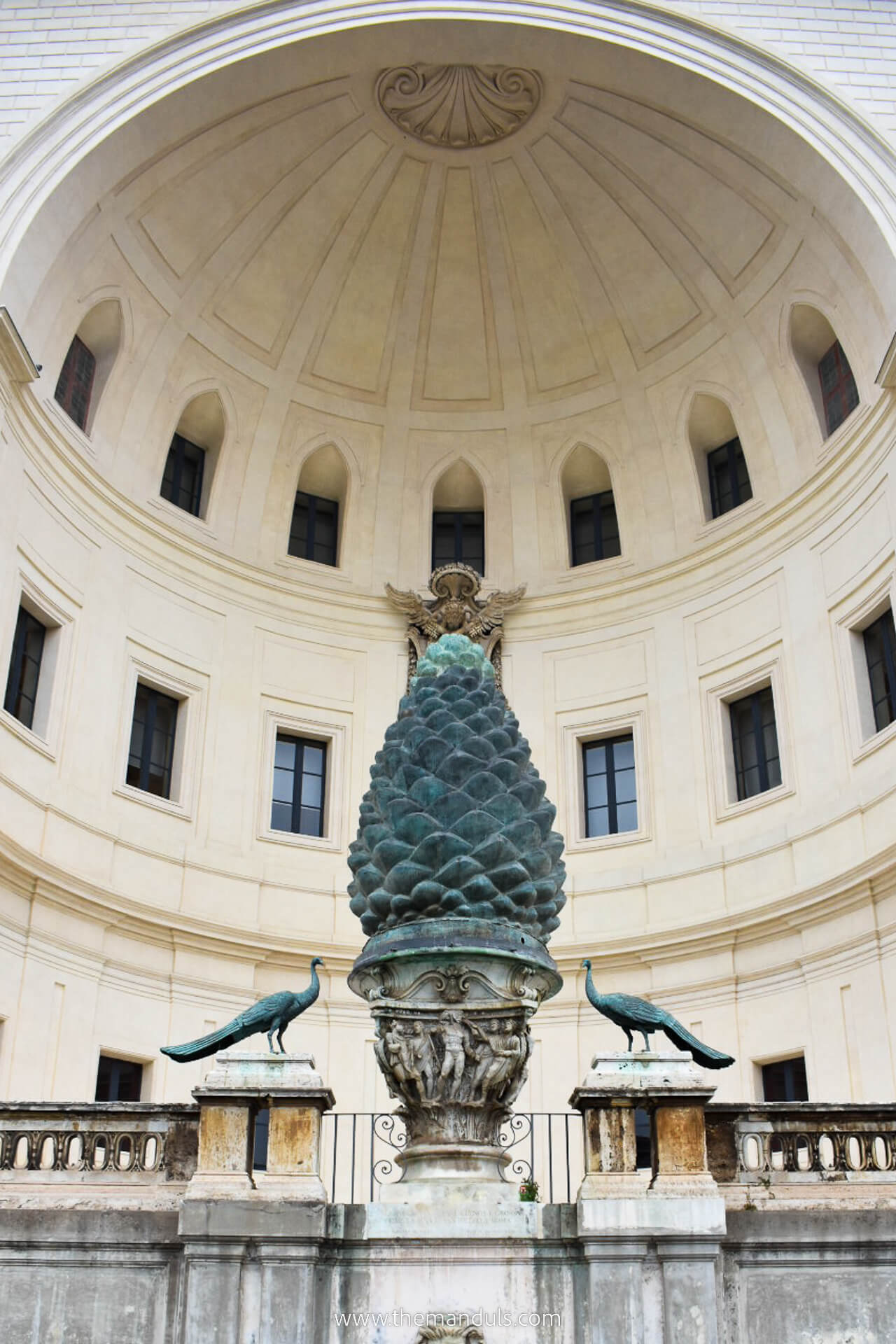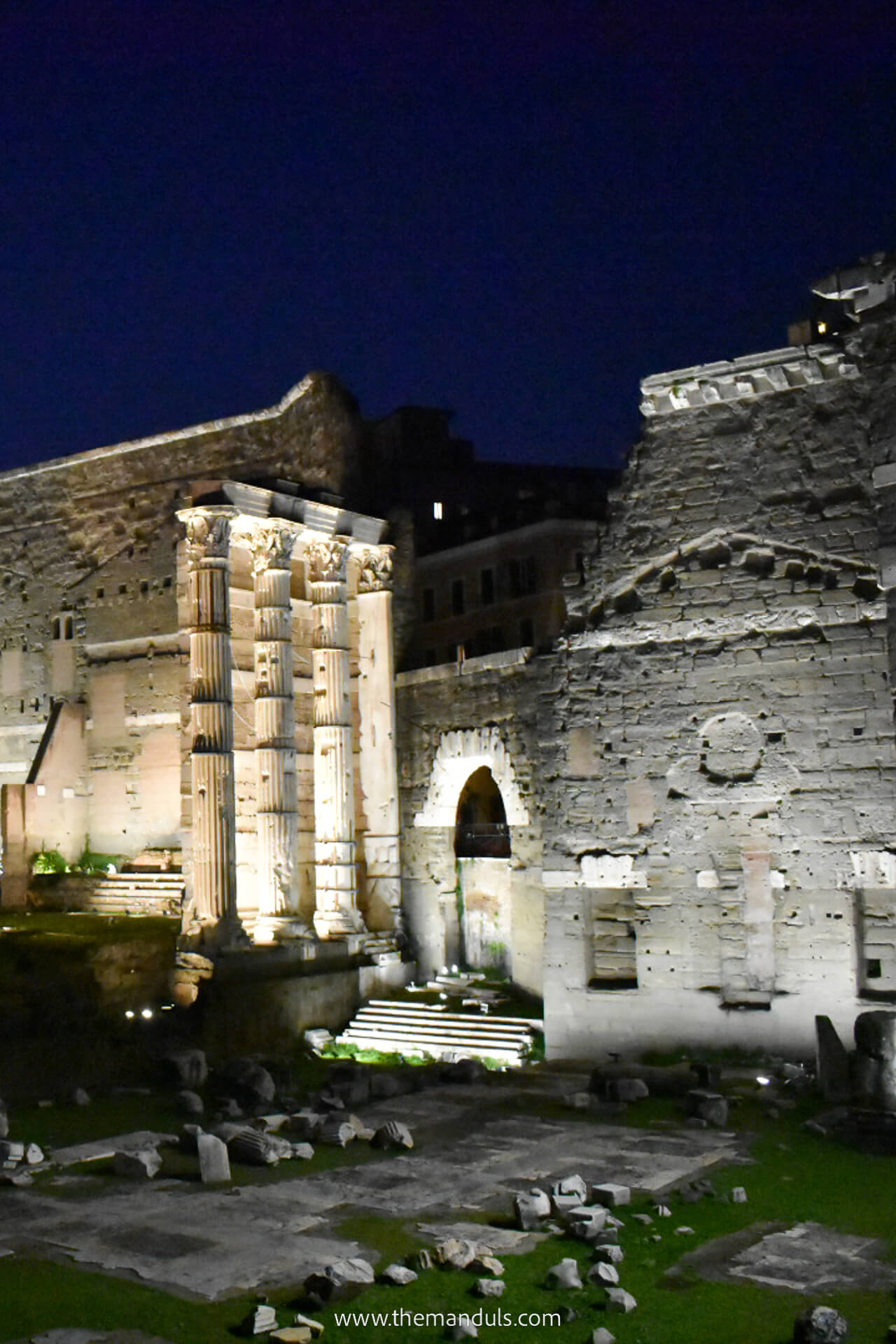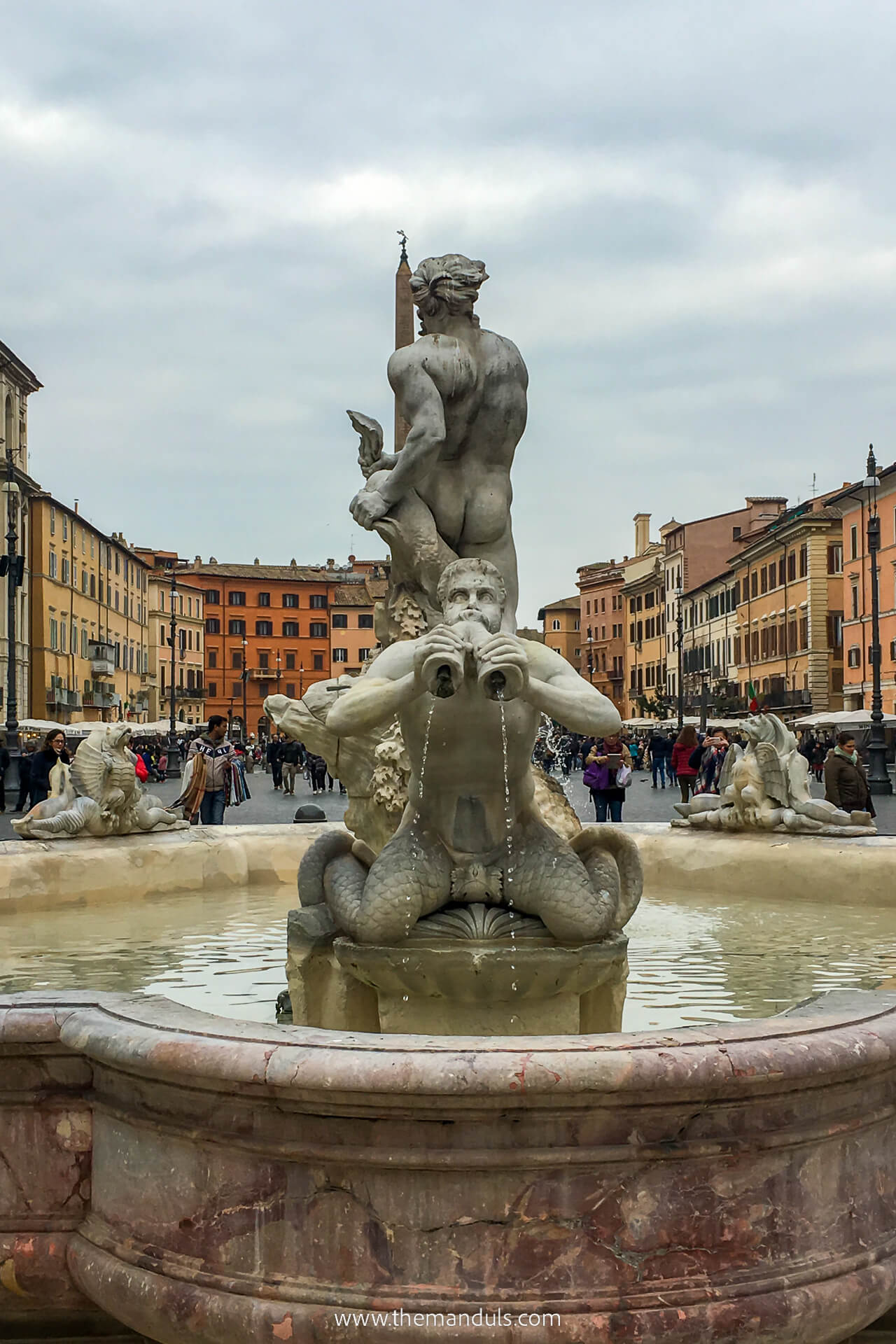This article contains affiliate links. Learn more in our affiliate disclosure.
Getting around Rome honestly felt a bit overwhelming on our first visit. We’re used to smaller cities with no metro at all, so landing in a place with ancient streets, ZTL zones, multiple transport options, and crowds everywhere wasn’t exactly intuitive at the start.
For the first day or two, we were constantly checking maps, second-guessing routes, and trying to understand how everything worked. But the funny thing is — once we got the hang of it, Rome turned out to be one of the easiest big cities to move around in.
Most sights are surprisingly close to each other, the metro is simple once you know the lines, and walking is often the fastest way to get between the major highlights (especially if you’re following our things to do in Rome guide).
In this guide, we’re breaking down exactly how to get around Rome in the simplest way possible — what actually works, what to avoid, and the little tricks we used to move around quickly without wasting time.

Quick Overview
⭐ Best overall: Walk + metro — easy in the center, fast for longer jumps.
⚡ Fastest: Metro — avoids traffic and connects major sights.
🚌 Best backup: Buses & trams — useful but slower in rush hour.
🚖 With luggage or nights: Taxis — reliable from official stands or FREE NOW app.
🚫 Avoid: Driving — ZTL zones + expensive parking.
Is Rome Easy to Get Around?
Yes — once you understand the basics, Rome is surprisingly easy to get around. The historic center is compact, so you can walk between most major sights faster than any transport.
The metro only has a few lines, but they cover the longer distances you actually need, and buses fill in the gaps.
Getting Around Rome: All Transport Options
Walking
Walking is the easiest way to move around the historic center, and honestly, it’s faster than any transport for places like the Pantheon, Trevi Fountain, Spanish Steps, Piazza Navona, Trastevere, and Monti.
The only thing to keep in mind is the cobblestones — they’re uneven and tiring, especially with heels or a stroller (we usually switch to a baby carrier when the pavement gets rough).
For navigation, Google Maps worked wonders for us!

Metro
Ticket Price: from 1.5€ per single ride
The metro is small, but it’s the most efficient way to get around Rome, especially for longer hops between the Colosseum, Termini, and Vatican. Trains usually run from around 5:30 AM to 11:30 PM (later on weekends).
You can buy tickets from machines in every station or at Tabacchi shops. Another option is to use the official Rome Public Transport website. They also provide maps, a journey planner, and real-time information.
Remember that the same ticket works for metro, bus, and tram for 100 minutes (this one costs 1.5€). Another option is to purchase a multi-day ticket, available for 1, 2, 3, or 5 days. Validate your ticket before entering the platform.
We recommend downloading Moovit or ATAC Roma for real-time metro updates, but Google Maps is also a great help.

Buses & Trams
Ticket Price: from 1.5€ per single ride
These fill in all the gaps where the metro doesn’t reach. They run frequently, but traffic can slow things down, especially around Piazza Venezia or anywhere near Via del Corso.
Tickets are the same as metro tickets — buy at machines, Tabacchi, or online and always validate once onboard. For real-time arrivals, Moovit is the most reliable app.
Trams are smoother and less affected by traffic, especially the lines running through Trastevere and Testaccio.
Regional Trains
Useful for airport transfers (more on that later) and day trips (Ostia Antica, Tivoli, Orvieto, Florence, Naples).
Termini is the main hub, but Tiburtina and Ostiense also serve important routes.
Trains usually run from early morning until late evening, and tickets can be bought at machines or via the Omio app (our preferred option — it’s faster and avoids queues).

Taxis & Ride Apps
Official taxis are easy to find at taxi stands and are the simplest option when traveling with luggage or late in the evening. You can pay by card in most of them, but always confirm before the ride.
Uber exists, but only as Uber Black, making it far more expensive. The FreeNow app is a better alternative and works well across the city.
If someone approaches you offering a “taxi,” skip it — these are unofficial drivers.
Renting a Scooter or Vespa
Fun, but best for confident drivers. Traffic can be chaotic, lanes are narrow, and locals drive assertively. If you go for it, choose a reputable shop and ensure your international driving licence (if required for your country) is valid.
Parking is easier than with a car, but avoid blocking pedestrian paths or entering ZTL zones — fines are automatic. For navigation, Google Maps works well.

Renting a Car
If you plan to get around Rome by car, it isn’t worth it — ZTL zones, expensive parking, and heavy traffic make it stressful.
But renting a car to leave the city (Amalfi Coast, Naples, Venice, Dolomites) is great.
We always book through DiscoverCars, and we always add full coverage insurance — it’s the simplest, safest option, and honestly our go-to for car rentals across Europe because they handle damage claims quickly and without drama.
You’ll need a valid EU license or an international driving permit, depending on your country. Use Waze for navigation; it’s better at flagging ZTLs and speed cameras than Google Maps.

Hop-On Hop-Off Buses
Hop-on hop-off buses can be a handy option if you’re short on time or visiting with kids and want an easy overview of the city without worrying about bus schedules.
We’ve used the City Sightseeing loop before, and it did exactly what we needed — simple route, major landmarks covered, and an audio guide included.
If you want a smooth experience, the GetYourGuide version is the easiest to book and use on your phone. Furthermore, they offer free cancellation up to 24 hours in advance.
It’s not the fastest way to move around, but it’s a relaxed way to get your bearings on your first day and see a lot without navigating the regular transport network.

Electric Bikes & E-Scooters
Handy for longer distances, especially between Testaccio, Trastevere, and the center.
Apps like Lime and Dott work well, but parking rules are strict — leave them only in marked areas or you’ll be charged extra.
Watch for uneven pavement and cobblestones, and avoid riding inside crowded pedestrian zones.
Airport Transfers
Getting from the airports into the city is much easier than it looks at first. We’ve tried a few different options over the years, and each works well depending on your budget and how much luggage you’re carrying.
From Fiumicino (FCO)
Ticket Price: from 9€
The fastest connection is the Leonardo Express — a direct train to Termini that takes about 32 minutes and runs roughly every 15–30 minutes from early morning until late evening.
It’s reliable, air-conditioned, and you can buy tickets straight from the Trenitalia machines or use Omio, which we prefer, so there’s no queue. If you’re staying somewhere that’s not convenient to Termini, the regional train to Trastevere or Ostiense might actually be more practical.
When using Omio search it will show you all the best options, including both buses and trains.

From Ciampino (CIA
From Ciampino (CIA) you actually have two solid options. The one many travellers overlook is the train connection: you take the Ciampino Airlink shuttle to Ciampino station and switch to a regional train into the city.
The whole trip takes around 35 minutes, costs only €3, and is often the fastest way to reach Rome if the timing matches your arrival. You can quickly check schedules or book tickets on Omio, which keeps everything in one place.
If you prefer something direct, the airport bus shuttles are the easiest pick. Terravision and Bus Shuttle both run straight to Termini in roughly 45 minutes, and tickets usually cost around €7. See the schedules and prices on Omio.

Common Mistakes to Avoid
- Not validating your ticket on buses or trams — inspectors are strict and the fines are expensive.
- Accidentally entering a ZTL zone when driving — the cameras issue automatic tickets, and it’s easy to miss the signs.
- Assuming Uber works normally — only Uber Black operates in Rome and it’s much pricier than official taxis.
- Underestimating walking distances on cobblestones, especially in the heat or with kids.
- Relying only on Google Maps for buses — delays happen often, so having Moovit or the ATAC app saves time.
- Expecting metro elevators everywhere — some older stations don’t have them, or they’re temporarily out of service.

Getting Around Rome With Kids
Exploring Rome with a little one is absolutely doable — you just need to know what to expect.
We quickly learned that walking is still the easiest way to move around the historic center, but the cobblestones can be rough for strollers. We suggest switching between stroller and baby carrier depending on the area: places like Trastevere, Monti, and around the Pantheon are much smoother on foot with a carrier.
The metro is simple to use with kids, especially for longer distances. Most stations have elevators, but not all, so you sometimes need a bit of patience. Buses are fine too, just expect them to get crowded in peak hours.
Overall, Rome is very family-friendly — you’ll just move a bit slower and choose your routes more intentionally.

Final Thoughts
Once you get used to its rhythm, Rome is one of those cities where moving around feels surprisingly easy. We started our trip feeling a bit overwhelmed, but we quickly understood how everything works.
The mix of walking and public transport is genuinely all you need for most sightseeing, and knowing a few practical details makes a huge difference.
If you plan your routes with a little intention, getting around becomes smooth and almost effortless, letting you focus on what actually matters: enjoying the city, the food, and all the places from your Rome itinerary.
If you still haven’t picked your accommodation, our where to stay in Rome guide breaks down the best areas with hand-picked hotel recommendations we’d choose ourselves.

